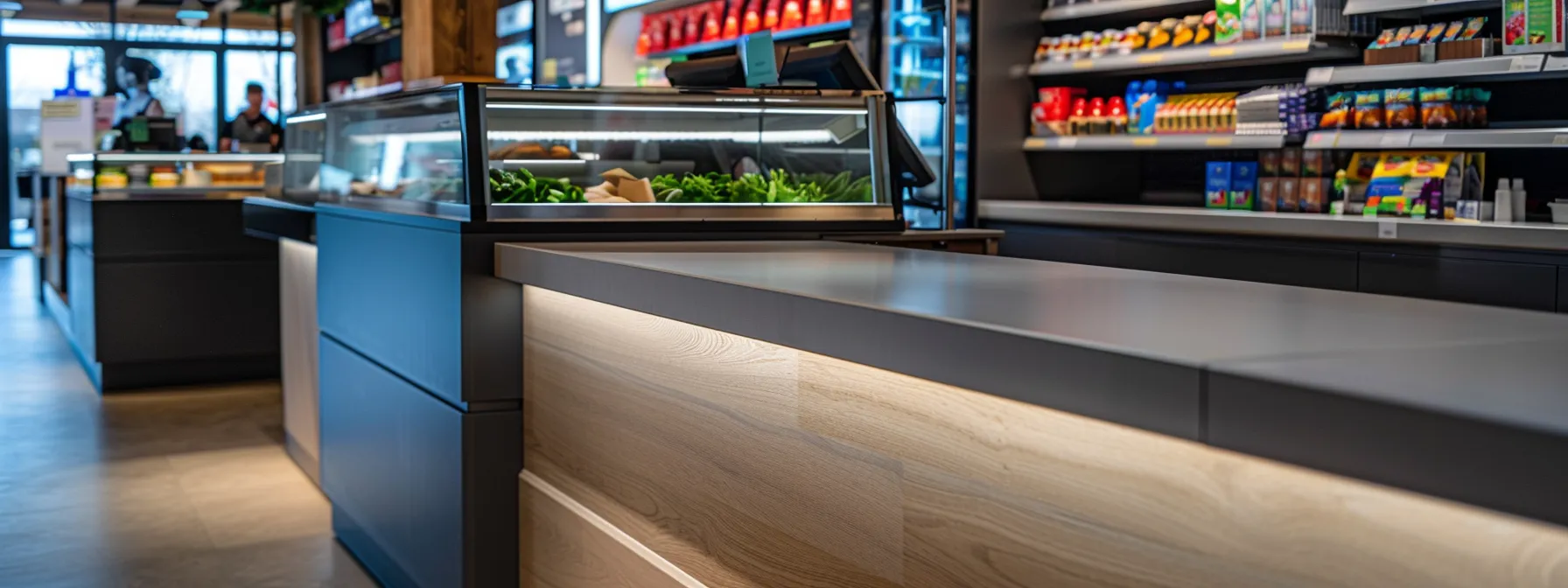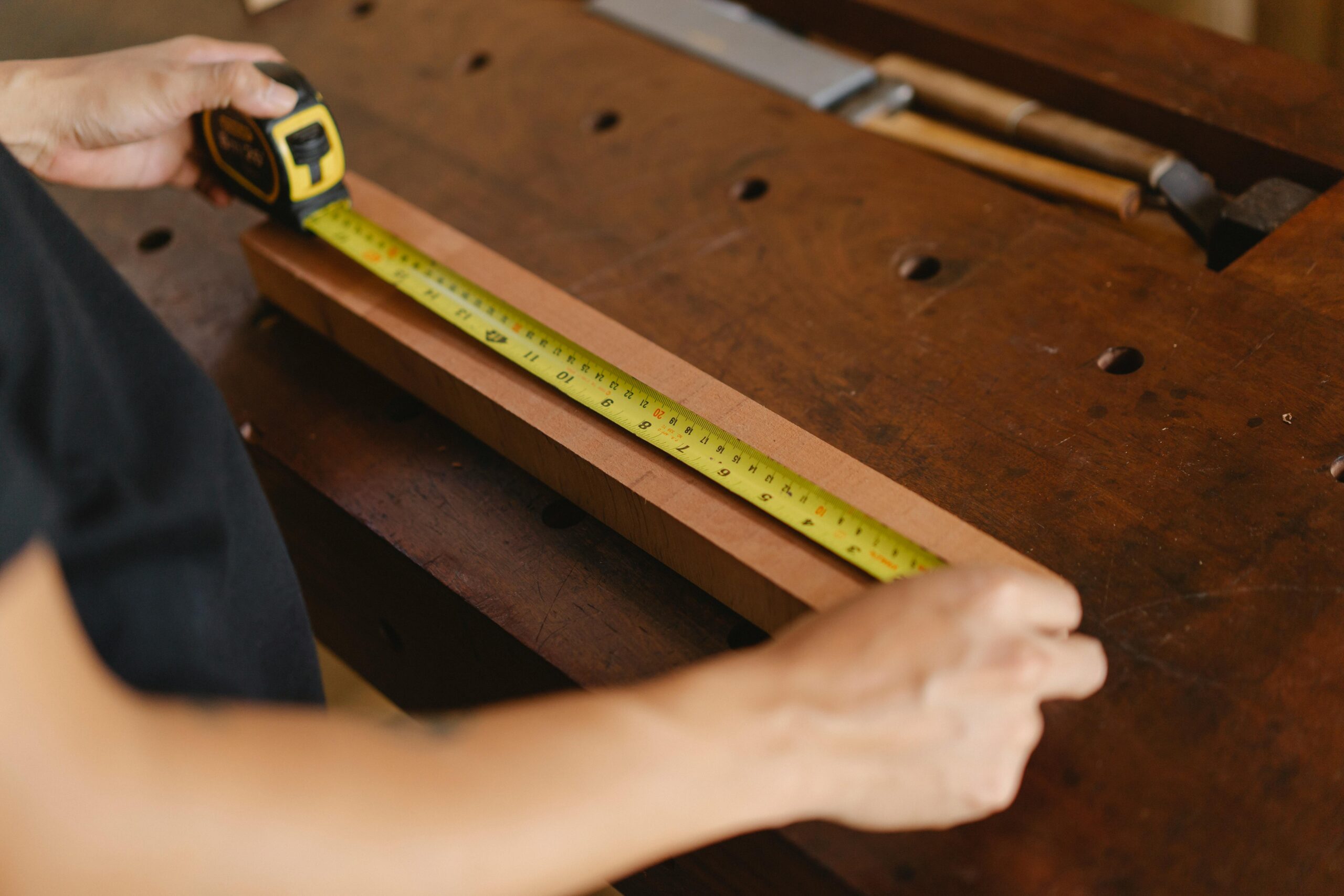
Creating spaces that comply with ADA standards is essential for ensuring everyone can navigate various environments comfortably. Understanding ADA knee clearance requirements is vital for designing accessible workspaces, medical facilities, and retail areas. Proper planning involves thoughtful considerations regarding aisles, vehicles, and even elevator access within specific jurisdiction guidelines. Recognizing these needs fosters inclusivity and improves the overall experience for all individuals. Keep reading to uncover best practices and innovative solutions for optimizing knee space accessibility in diverse settings.

The Americans with Disabilities Act (ADA) lays out specific regulations to ensure that individuals with disabilities receive equal access to various facilities, including those accommodating sinks and computer hardware in spaces such as auditoriums. For effective knee space design, adherence to ada knee clearance key measurements and standards is essential. These standards highlight the importance of adequate clearance and reachability, which enable users to interact comfortably with fixtures and equipment. Furthermore, variations in facility types necessitate tailored considerations to meet specific needs, illustrating the broader implications of these regulations in real-world applications.
Adequate knee space under the ADA ensures that individuals can utilize various facilities with comfort and safety. It is recommended that there be at least 27 inches of clearance from the floor of the room to the underside of the fixture, allowing for sufficient legroom. Additionally, when installing grab bars, they should be mounted parallel or perpendicular to the floor, providing reasonable accommodation for users who may require additional support while accessing sinks or other amenities.
Key measurements for accessible knee space design are vital for compliance with various regulations, including the Fair Housing Act and the Rehabilitation Act of 1973. Establishing an appropriate occupancy rating helps determine the necessary dimensions for knee clearance, ensuring that all individuals can navigate spaces effectively. Adhering to the International Building Code also mandates consideration of features such as handrails, which provide additional support and stability in areas where accessibility is critical.
Clearance and reachability play a crucial role in creating accessible environments in various settings, such as townhouses and dormitories. These design elements ensure that features are not only available but usable for all individuals, including passengers with disabilities. By prioritizing accessible design, architects and builders can enhance the functionality of spaces under varying roof structures, ultimately promoting inclusivity and independent navigation throughout these residences.
Diverse facilities must adapt ADA standards to meet the unique needs of individuals with disabilities. For instance, courts often feature specialized accommodation, such as accessible seating arrangements and designated buttons to assist users in navigating the space safely. Employment environments also require tailored knee space designs to ensure that all employees can perform their tasks effectively while adhering to safety and accessibility regulations.
| Facility Type | Key Considerations | Implications |
|---|---|---|
| Court | Accessible seating, buttons for navigation | Ensures safety and comfort for users |
| Employment | Tailored knee space designs | Facilitates effective job performance for all employees |
| Public Facilities | Variable configurations based on size | Enhances usability and accessibility for wider audience |
With a solid grasp of ADA requirements for knee space, the next step is to bring those guidelines to life. Implementing accessible knee spaces in workspaces not only meets regulations but enhances overall functionality and comfort.

Incorporating accessible knee spaces within workspaces necessitates a multifaceted approach that addresses compliance with relevant standards, such as the Texas accessibility standards. Designing for compliance involves ensuring that doorways allow for easy entry while providing adequate toe clearance to accommodate a range of users. Adapting existing spaces can significantly enhance accessibility, making it easier for individuals with diverse needs to participate fully in the workplace. Furthermore, considering the dynamics of multi-user environments helps create spaces that are not only functional but also welcoming to everyone. Addressing frequent questions (faq) about accessibility in recreational settings also assists in aligning facility design with best practices, thereby fostering a more inclusive atmosphere for all users.
Compliance in office settings requires a keen focus on design elements that align with the United States Access Board standards. For instance, countertops must be positioned at appropriate heights to ensure wheelchair users can comfortably access work surfaces, while ensuring ventilation systems accommodate these spaces effectively without obstruction from ceiling fixtures. Additionally, incorporating adjustable features can greatly enhance the usability of workstations in laboratory environments.
| Design Element | Consideration | Compliance Standard |
|---|---|---|
| Countertop Height | Accessible for wheelchair users | United States Access Board guidelines |
| Ceiling Fixtures | Avoidance of obstruction in pathways | ADA regulations |
| Ventilation Systems | Ensure proper airflow without hindrance | Code compliance for health and safety |
Adapting existing spaces to enhance accessibility requires careful assessment of elements such as bathrooms, bedrooms, and showers to identify barriers. Modifications may include installing grab bars in shower stalls and ensuring proper clearance around fixtures to comply with building code. Furthermore, implementing solutions for navigating stairs, such as ramp installations or lift systems, significantly improves overall accessibility for all users.
Creating accessible knee spaces in multi-user environments requires careful planning to accommodate diverse user needs. For instance, facilities such as amusement parks should integrate accessible features into their bathing areas, ensuring that all visitors can enjoy the amenities without barriers. Additionally, incorporating a fire alarm system designed for inclusivity enhances occupational safety and health by allowing individuals with different abilities to respond promptly in emergencies.
Having established the importance of accessible knee spaces in work environments, it becomes evident that these principles must also extend into medical settings. Ensuring that healthcare facilities meet accessibility standards is vital for promoting inclusivity and enhancing patient care.

Understanding and implementing specific ADA guidelines within healthcare settings is vital to fostering an inclusive environment for all patients. Healthcare facilities must consider the adjustment of diagnostic equipment to provide adequate knee space, ensuring that individuals of varying abilities can access services without discrimination. Architects play a critical role in this process, as they design properties that accommodate the needs of every patient, promoting comfort and dignity in medical contexts. Thoughtful construction practices focused on accessibility allow for the seamless integration of features that enhance usability, ultimately improving the overall experience in healthcare environments.
The implementation of ADA guidelines in healthcare settings ensures that facilities are not only compliant but also promote effective accessibility for all patients. Renovation projects must focus on features such as accessible entrances, which may include ramps or gates, as well as clear sidewalks that facilitate ease of movement. Adhering to these guidelines enhances the overall patient experience by providing a safe and welcoming environment for individuals with varying abilities.
Adjusting diagnostic equipment to accommodate knee space is crucial in medical facilities, particularly in settings like prisons where accessibility ensures that all inmates receive necessary care. Ensuring that equipment such as urinals is positioned correctly allows individuals to interact comfortably, including those who may use adaptive devices. Additionally, incorporating braille labels on equipment helps further enhance accessibility, allowing individuals in various environments, including healthcare settings, to navigate and respond effectively in emergencies.
Ensuring access and comfort for all patients requires thoughtful consideration of design elements within medical facilities. The height of cabinetry should facilitate ease of use for individuals in various mobility situations, while attention to the gradient of curbs leading to entrances enhances accessibility for wheelchair users. Furthermore, the strategic positioning of walls can offer additional support and guidance, creating a more inclusive environment in waiting areas and examination rooms.
As medical facilities prioritize accessible knee space, the conversation now turns to the importance of similar considerations in educational environments. Ensuring that students have the comfort and mobility they need can significantly impact their learning experience.

In educational settings, ensuring compliance with ADA standards for knee space extends beyond mere regulations; it involves creating an inclusive learning environment. Classrooms and laboratories require adaptable designs that cater to various learning activities while accommodating diverse needs, including students who use wheelchairs. Incorporating features like accessible toilets and strategically designed closets promotes independence and ease of use. Furthermore, integrating technology with accessibility in mind acts as a safe harbor for all students, fostering a supportive atmosphere where everyone can participate fully, inclusive of individuals transitioning from environments such as a homeless shelter.
Ensuring compliance in classrooms and laboratories necessitates a focus on creating a clear floor space that accommodates the needs of all students. Knee clearance around desks and workstations is vital, particularly in settings where students engage with machines or utilize equipment like vending machines. Properly designed layouts not only promote accessibility but also enhance the educational experience for individuals residing in various types of dwelling arrangements.
Adaptable designs within educational buildings must prioritize accessibility in line with the Americans with Disabilities Act of 1990 and Section 504 of the Rehabilitation Act. These designs should incorporate features that ensure students can navigate easily, including pathways leading to amenities such as classrooms and bus stops, while also respecting the principles of historic preservation. By integrating flexible layouts and accessible furnishings, educational institutions can foster an inclusive environment that accommodates the diverse needs of all students.
Integrating technology with a focus on accessibility ensures that educational environments effectively serve all students, including those who utilize a mobility aid. For instance, automated teller machines located on school campuses must be designed to provide easy access from the floor level, enabling students to manage their finances independently. Additionally, features such as accessible digital tools can promote inclusivity during activities like swimming, enhancing the overall compliance with ADA standards.
Transitioning from educational spaces, the focus shifts to retail and service environments where accessibility plays a pivotal role. Embracing inclusivity in these settings not only enhances customer experiences but also fosters a sense of belonging for everyone.

Implementing knee space considerations in retail and service environments plays a fundamental role in ensuring that all visitors, regardless of ability, can access services comfortably. This includes strategically designing checkout counters and kiosks to provide adequate knee clearance, in compliance with the American National Standards Institute guidelines. Fitting rooms and dining areas must also be tailored to accommodate diverse needs, allowing seamless accessibility for everyone. Additionally, strategies for maximizing space should take into account clear walkways and essential fixtures, such as drinking fountains, to enhance overall usability in lodging establishments and public spaces. By prioritizing these aspects, businesses can create welcoming environments that promote inclusivity for all patrons.
Designing accessible checkout counters and kiosks requires careful attention to knee space to accommodate individuals with physical disabilities effectively. For instance, ensuring that the space beneath the counter is clear and unobstructed can facilitate smooth navigation, similar to the accessibility features found in a well-designed bathtub area. Incorporating elements like valet parking services and carpeting can further enhance the overall experience, providing a welcoming environment that integrates comfort and accessibility for all patrons.
Fitting rooms and dining areas require thoughtful design to ensure accessibility for all patrons. By implementing spacious layouts that allow for easy navigation, these environments can cater to individuals with diverse abilities. Including features such as adjustable seating and clear pathways enhances comfort, providing all visitors with a welcoming and accommodating experience.
Maximizing space and accessibility within retail and service environments necessitates careful design considerations that promote usability for all visitors. Thoughtful placement of fixtures and furniture can ensure clear and unobstructed pathways, allowing individuals with varying abilities to navigate easily. By implementing multipurpose spaces and flexible layouts, businesses can accommodate diverse needs while maintaining an inviting atmosphere.
Inclusive retail and service environments set the stage for meaningful accessibility. Next, let’s dive into the key practices for effective knee space design and installation.

Effective knee space design and installation demand a strategic approach that encompasses several critical elements to ensure compliance and functionality. Selecting materials that combine durability with adherence to regulations serves as a foundation for long-lasting, accessible environments. When faced with unique spatial challenges, innovative solutions must be implemented to optimize usability and safety. Additionally, institutions should prioritize regular maintenance and updates, ensuring that spaces remain compliant with evolving ADA standards and effectively serve all users. This comprehensive focus on both initial design and ongoing upkeep fosters inclusivity and supports a welcoming atmosphere for individuals of all abilities.
Choosing appropriate materials plays a significant role in ensuring knee space designs meet both durability and compliance standards. The selection of strong, resilient materials not only enhances safety but also promotes longevity, accommodating the daily wear and tear of high-traffic areas. Incorporating elements that adhere to ADA regulations ensures that all users benefit from accessible designs over the long term:
Addressing unique spatial challenges in knee space design requires creativity and innovation. For instance, employing modular furniture can allow for flexible configurations that cater to varying user needs while maximizing available space. Additionally, integrating retractable or adjustable features can enhance usability in environments where traditional dimensions may fall short, making venues more inclusive for individuals with diverse abilities.
Regular maintenance and updates are vital for ensuring that knee space complies with ADA standards over time. Facilities must conduct routine inspections to identify potential barriers and address any wear or deterioration that could hinder accessibility. By keeping spaces up-to-date, organizations foster an environment that continually supports the diverse needs of all users, ensuring consistent compliance and usability.
Mastering ADA standards for knee space accessibility is essential for creating inclusive environments across various facilities. Adequate knee space ensures comfort and safety for individuals with disabilities, facilitating their interaction with essential features. Proper design and ongoing maintenance foster usability while meeting regulatory requirements. Ultimately, prioritizing accessibility enriches the experience for all users, promoting equal opportunities and independence.



When it comes to ADA (Americans with Disabilities Act) compliance, you have two options as a business owner: either hire a certified ADA inspector or

It’s possible to mistake a standard tape measure for an ADA tape measure because they look almost identical. After all, both are used for measuring